The National Bank of Canada has released some stunning charts on the rental crisis gripping Canada following the biggest immigration-fueled population explosion in the nation’s history, which saw the nation’s population grow by 1.25 million people in a single year.
Canada’s population growth rate in 2023 was 3.2%, five times the OECD average:

As shown in the next chart, this population explosion has driven an enormous gap between housing demand and supply across Canada:
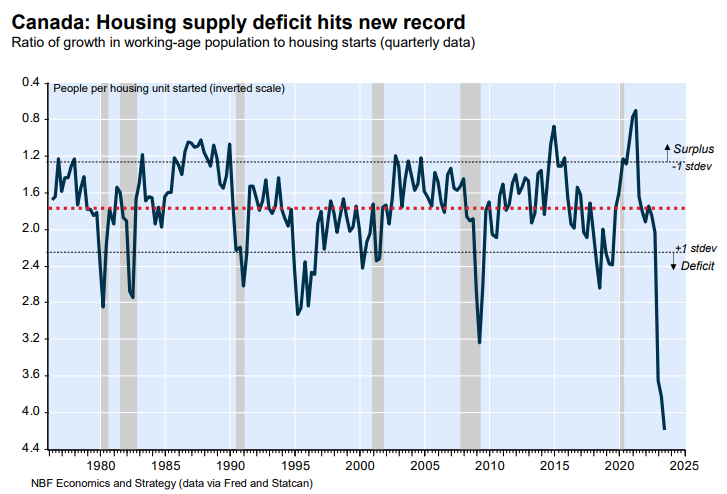
National Bank of Canada estimates that Canada would need to build 725,000 homes a year just to keep pace with population growth:
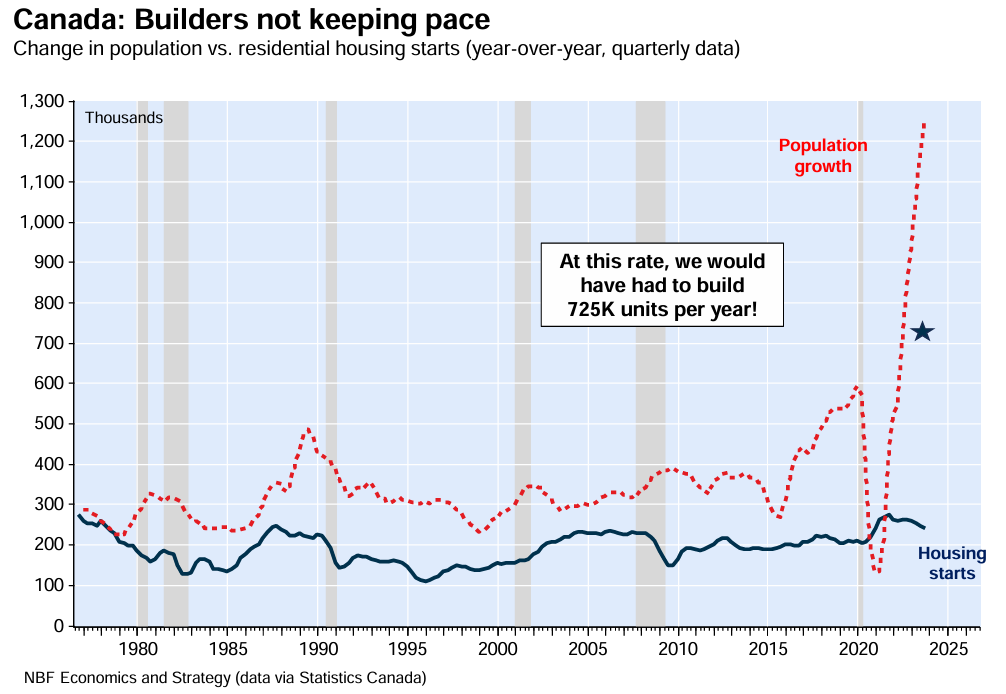
As a result, Canadian rental vacancy rates have collapsed, and rents are soaring across Canada:
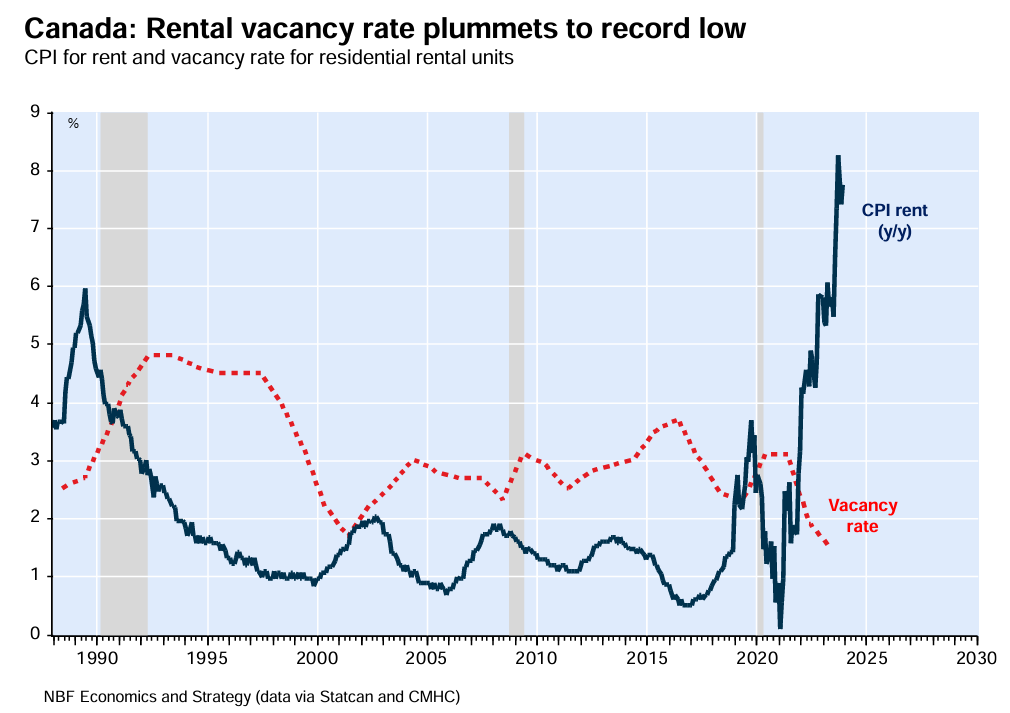
“Affordability issues in the rental segment have become particularly acute in the last two years, as evidenced by the decline in the vacancy rate, which fell by half between the end of 2021 and the end of 2023, according to data just released by CMHC. The result is a record-low vacancy rate”, noted the report authors.
The next chart shows a direct correlation between Canada’s surging rental inflation and population growth:
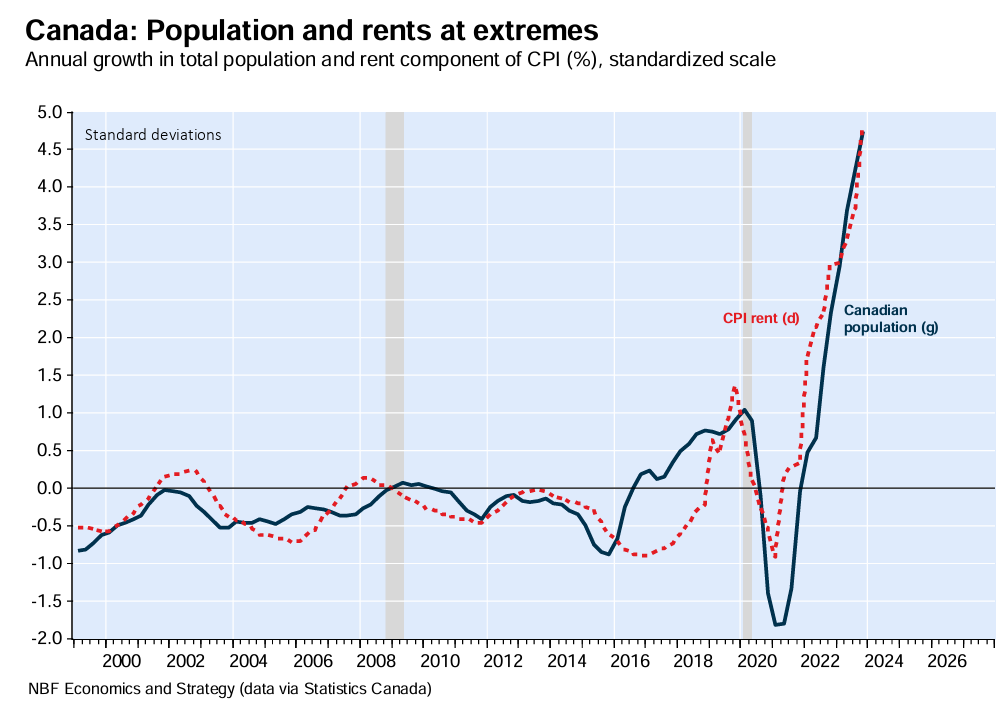
The report authors take direct aim at those claiming that Canada’s rental crisis is a supply issue:
“Some observers say that focusing on immigration to explain the current housing shortage is a mistake”…
“But the increase in population of 5 standard deviations in the last year stands out to us as being primarily responsible for an increase in rental prices of 5 standard deviations”.
“To absorb such an increase in population, following the historical norm of one housing unit for every 1.7 additional individuals in the population, 725K housing units would have had to be built in 2023, after 480 units the previous year”.
“However, housing starts were only 241K and 263K units, and the residential construction sector has never exceeded 274K units on an annual basis”.
“For those counting on an increase in supply to meet the demand generated by such population increases, you should know that the construction sector was operating at 84% of capacity in the third quarter, according to Statistics Canada, which means that the potential for a substantial increase in activity in the medium term is simply nil”.
The authors also argue that Canada’s soaring rents are placing upward pressure on inflation, forcing the Bank of Canada to keep interest rates higher for longer:
“The shelter component of the CPI, which is rising at a rate of almost 6.0% due to mortgage interest costs, for which the central bank is responsible, and to the rise in rental prices attributable to the dizzying increase in population”.
“Without this component, Canadian inflation has been close to its target range in recent months (2.4% in December)”:
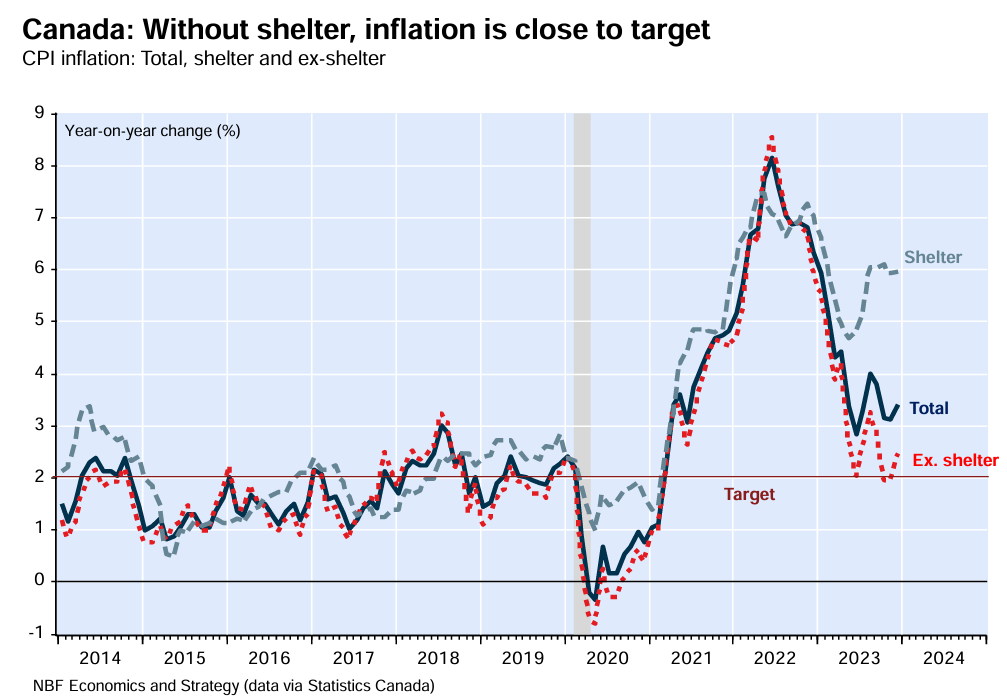
Similar forces are at play in Australia, where record levels of net overseas migration have helped to create a gaping housing shortage, plummeting rental vacancy rates, and soaring rental inflation.

